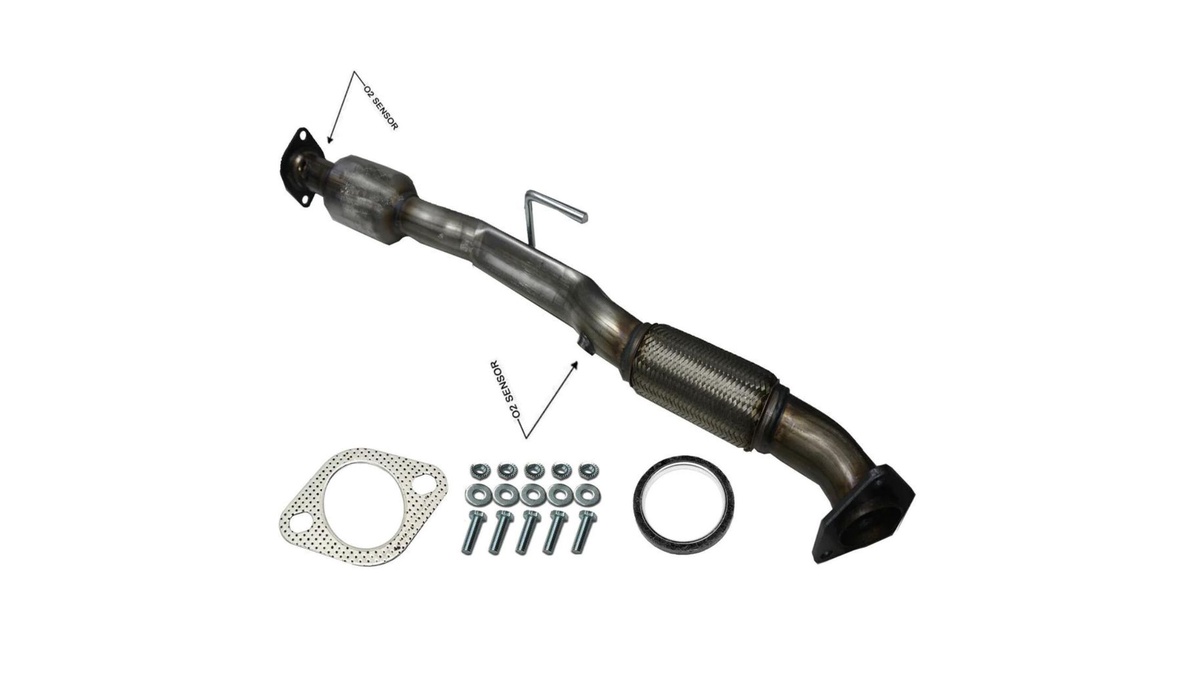In the ongoing battle against air pollution and environmental degradation, catalytic converters stand as silent heroes, working tirelessly within vehicle exhaust systems to reduce harmful emissions. These essential components play a crucial role in mitigating the adverse effects of vehicle emissions on air quality and public health. In this blog, we will explore the significance of catalytic converters, how they function, and their importance for a cleaner, greener future.
What is Catalytic Converters?
A catalytic converter is a device installed in a vehicle's exhaust system that converts harmful pollutants in engine exhaust into less harmful substances. The converter achieves this through a series of chemical reactions catalyzed by precious metals such as platinum, palladium, and rhodium. These reactions primarily target pollutants such as carbon monoxide (CO), nitrogen oxides (NOx), and hydrocarbons (HC), transforming them into carbon dioxide (CO2), nitrogen (N2), and water vapor (H2O), which are less harmful to the environment.
How Catalytic Converters Work
Inside a catalytic converter, there are honeycomb-like structures made of ceramic or metal substrates coated with the catalyst metals. As exhaust gases pass through these structures, the catalysts facilitate oxidation and reduction reactions that break down and neutralize harmful compounds. This process effectively reduces the emission of pollutants, helping to improve air quality and minimize the environmental impact of vehicle emissions.
The Importance of Catalytic Converters
Catalytic converters play a vital role in reducing vehicle emissions and protecting public health. By significantly reducing the amount of harmful pollutants released into the atmosphere, catalytic converters help minimize smog formation, respiratory illnesses, and environmental damage. As a result, they are instrumental in achieving regulatory emissions standards and promoting sustainable transportation practices.
How to prevent Catalytic Converter theft
Preventing catalytic converter theft requires a combination of vigilance, awareness, and proactive measures. Here are some steps you can take to minimize the risk of catalytic converter theft:
Park in Well-Lit Areas: When parking your vehicle, choose well-lit and highly visible areas. Thieves are less likely to target vehicles parked in areas with good lighting and high foot traffic.
Install a Security System: Consider installing a car alarm or security system that includes motion sensors and tilt sensors. These systems can detect unauthorized movement or tampering and alert you or others nearby.
Use Catalytic Converter Locks: Specialized catalytic converter locks are available that make it more difficult for thieves to remove the converter. These locks attach to the converter and require a unique key for removal.
Etch or Mark Your Converter: Engraving your vehicle identification number (VIN) or another unique identifier onto your catalytic converter can deter thieves and make it easier to recover if stolen. Some police departments offer catalytic converter etching services.
Use Security Cameras: Install security cameras near where you park your vehicle, especially if you park in a driveway or private lot. Surveillance footage can help identify thieves and serve as evidence for law enforcement.
Insurance Coverage: Check with your insurance provider to see if catalytic converter theft is covered under your policy. If not, consider adding comprehensive coverage to protect against theft and vandalism.
Catalytic Converters and Environmental Responsibility
Catalytic converters are essential components in the fight against air pollution and climate change. By reducing harmful emissions from vehicles, catalytic converters help improve air quality and protect public health. At Excel Exhaust, we are committed to providing high-quality catalytic converters that meet or exceed industry standards, ensuring that drivers can enjoy cleaner, more sustainable transportation.
Catalytic Converter for Nissan
Nissan vehicles are equipped with high-quality catalytic converters designed to meet stringent emissions requirements while maintaining optimal engine performance. These converters are engineered to effectively reduce harmful emissions, ensuring compliance with environmental regulations and contributing to cleaner air quality. With a commitment to innovation and sustainability, Nissan continues to prioritize the development of advanced catalytic converter technologies to minimize its environmental footprint and support global efforts to combat climate change.
Catalytic Converter for 2007-2020 Nissan Altima
The Nissan Altima is a reliable and popular sedan known for its performance and efficiency. Catalytic converters for the 2007-2020 Nissan Altima are designed to meet stringent emissions standards while maintaining engine efficiency. At Excel Exhaust, we offer high-quality catalytic converters specifically designed for the Nissan Altima, ensuring optimal performance and environmental compliance.
Catalytic Converter for 2007-2020 Nissan Maxima
The Nissan Maxima is a stylish and sporty sedan that demands exceptional performance. Catalytic converters for the 2007-2020 Nissan Maxima are engineered to deliver superior emissions control without sacrificing power or fuel efficiency. Excel Exhaust offers premium-grade catalytic converters tailored to fit the Nissan Maxima, providing peace of mind and reliable performance for drivers.
Conclusion
Catalytic converters play a vital role in reducing vehicle emissions and protecting the environment. By converting harmful pollutants into less harmful gases, catalytic converters help mitigate the impact of transportation on air quality and public health. With high-quality catalytic converters from Excel Exhaust, Nissan drivers can enjoy cleaner, more efficient vehicles while doing their part to preserve the planet for future generations.


No comments yet